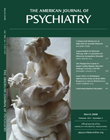To The Editor: Drs. Lan, Wu, Chiu, Hu, and Tuan raise important points that we appreciate and would like to address. We agree that the question of the effect of prenatal depression on birth outcome needs to be further studied. In fact, we initially hypothesized that active depression during pregnancy would be associated with an increased risk of preterm birth. Therefore, we were also surprised to find that depressive symptoms per se did not seem to influence outcome. We selected the proportion of monthly visits in which subjects met SCID criteria for depression and maximum scores on the HAM-D in order to prospectively determine the effect of the 1) time spent in a major depressive episode during pregnancy and 2) severity of depressive symptoms on outcome measures. Dr. Lan et al. raise concern that our assessment of depression may not fully reveal the extent of prenatal maternal depression and suggest that the average HAM-D score across pregnancy may more adequately reflect mood. In our study, the mean 28-item HAM-D scores were 15.1 for Group 1 (depressed subjects receiving medication), 15.5 for Group 2 (depressed subjects not receiving medication), and 8.8 for Group 3 (comparison subjects). In re-examining the data with mean HAM-D scores used in a hierarchical linear regression model, as Dr. Lan et al. suggest, we did not find that the overall model significantly predicted gestational age at birth (R 2 =0.07; F=1.25, df=5, 83, p=0.29). The individual contribution of depression as measured by the average HAM-D scores over all time points, after controlling for other risk factors, was not significant (change in R 2 =0.01; F=1.0, df=1, 83, p=0.32). Thus, in our study depression (which was defined as average depressive symptoms across pregnancy) was not associated with lower gestational age at birth or increased risk of preterm birth.
Dr. Lan et al. question the clinical significance of a mean gestational age for antidepressant-exposed subjects of 38.5 weeks compared with 39.4 to 39.7 weeks for untreated and healthy comparison subjects, respectively. While this mean difference of 1 week is quite large by conventional standards of effect size (Cohen’s d=0.8), we agree with Dr. Lan et al. that the relevance for infant outcome is not clearly known. However, our study also found that the rate of preterm birth, defined as less than 37 weeks of gestation and a known cause of neonatal morbidity
(1 –
3), was almost three times greater in the antidepressant-treated group (14.3% versus 0 and 5.3% for the other two groups, p=0.05). We feel that such a high rate of prematurity in medically healthy subjects with good prenatal care and few preterm risk factors is of concern.
Our findings suggest that prenatal antidepressant use is not neutral, and if antidepressants per se or antidepressants in interaction with depression impact the timing of delivery, this should be known for informed decision making. Further investigation in this important area is clearly necessary, and our research group plans to conduct larger-scale studies.

